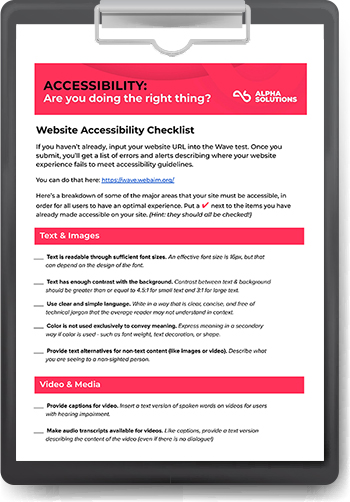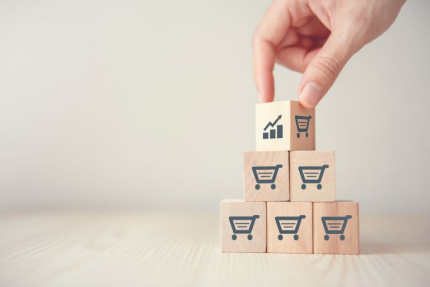There’s much buzz about B2B ecommerce personalization these days, but the discussions are generally on the vague side.
Such ideas sound impressive to decision makers, but when it comes to actual implementation, they’re often pushed to “phase 2” status, which we all know is another way of saying “it’s never going to happen.”
(Raise your hand if you’ve seen this before. 🙋)
In this article, we’ll explore actionable personalization strategies like
-
tailored pricing,
-
dynamic recommendations, and
-
personalized search functionality.
But before we dive into to specifics – let us start with a brief overview of B2B Ecommerce Personalization.
What is B2B Ecommerce Personalization?
B2B ecommerce personalization means tailoring a digital experience to meet the unique needs of individual businesses or accounts.
Let’s explore some ecommerce personalization examples:
Personalized Pricing and Tailored Pricing Strategies
Pricing in B2B is rarely one-size-fits-all. Common strategies include:
-
Negotiated rates: specific to individual accounts or contracts
-
Bulk Purchase Incentives: discounts based on order volume
-
Extended Contract Arrangements: reflecting long-term agreements
These strategies create personalized pricing structures that cater to an individual customer's unique relationship, purchase volume, and historical buying patterns.
Advanced Product Customizations
Many B2B businesses need specific product variations (like different sizes, materials, or features).
While not all e-commerce platforms support this functionality, letting customers configure products to their exact needs is a significant competitive advantage.
Segmented Content and Product Recommendations
Using personalized product recommendations tailored to a business’s buying habits enhances the shopping experience.
Specialized recommendation engines or personalized search tools can suggest relevant products, promotions, or content based on past behaviors and preferences.
Personalized Search and Navigation
B2B customers often know exactly what they’re looking for, down to the part number or specification.
Enhanced search capabilities that allow for filtering based on detailed criteria can make the buying process more efficient for B2B customers.
Search engines are getting better and better at returning highly personalized results after a few interactions with a user. These engines use ML and AI, as well as interactions and any available data.
Reordering and Subscription Features
For businesses that order regularly, personalization can include:
-
Streamlined reordering processes
-
Subscription options for repeat purchases.
-
Suggestions for converting frequently ordered items into subscriptions.
These features save time and ensure continuity for both buyer and seller.
Before implementing any B2B personalization strategy, it’s critical to start with clear planning.
|
How accessible is your website? Get our free accessibility checklist to guide your efforts for getting compliant and doing the right thing. Plus, receive real feedback from us to help you on your next steps. |
Planning Personalization in Ecommerce
Before working with an implementation partner to help with your personalization strategies, you have some homework to do…
✅ Consider which features you want to implement and what outcome you expect from them
✅ Set measurable goals
✅ Continuously evaluate to determine if your implemented personalization initiative is moving the needle in the right direction
To truly understand how personalization can transform B2B ecommerce, let’s explore a cornerstone personalization strategy—tailored pricing.
A Deep Dive Into Tailored Pricing
Personalized pricing is a core must-have feature for any B2B commerce system.
It’s an expectation that a modern B2B commerce system features individual pricing/pricelists based on different criteria (such as location), all the way down to the single account/customer level.
After being negotiated and written in contracts, personalized price lists can be manually set and configured in your platform.
▶️ To implement this strategy, your chosen commerce engine must support personalized pricing, or provide flexibility for customization to do so.
Personalized Discounts
Let’s say you’ve been studying your analytics and know -
…who buys after three abandoned cart emails,
…who waits until offered a discount before placing an order, and
…who only orders during a full moon. 😆
With this information you can create very targeted and personalized promotions or discounts. Either on a segmentation level, or down to the individual customer.
Below is an example of a rule-based promotion:
-
30% off the most expensive item
-
Applicable if the Order Value is over $500
-
For customers with purchases exceeding $10,000 in the last 6 months
▶️ The commerce engine you choose must be able to support promotions where you can build custom promotions based on rules. The rule engine used must be able to support using external or imported data.
Automated Dynamic Pricing
Dynamic pricing adjusts product prices based on real-time factors like…
-
competitor pricing
-
inventory levels
-
or customer behavior
While this approach is more common in B2C (think airline pricing), it’s gaining traction in B2B with the advent of AI and ERP-integrated tools from providers like Microsoft and SAP.
However, dynamic pricing requires significant data integration and is rarely available out of the box in most ecommerce platforms.
▶️ Dynamic pricing is rarely offered out of the box by commerce engines. If this is a must-have for your business case, you’ll have to rely on larger ERP systems, or add-on modules and systems.
One could argue (with valid reasons) which dynamic pricing calculation should be outside the core commerce engine. (The reason being that dynamic pricing is dependent on data outside core commerce features. )
Successful B2B Personalization
Personalization has always been central to in B2B commerce but today it extends to content and product recommendations, hyper-personalized search, and dynamic pricing.
It’s highly recommended that you explore options and features, and plan for exactly what areas of B2B personalization are likely to work for your business.
As always, be sure to set measurable goals (and monitor results) so you know if your initiative worked or not.
Stay tuned for more technical insights
Keep an eye on our LinkedIn Page for more technical insight articles on the topic of B2B ecommerce personalization, or contact us to learn more.
Want to talk about how we can help grow your B2B enterprise? Book a call anytime.
Further Reading on B2B Ecommerce
There are a number of relevant sources of relevant information:
⭐️ Read our b2b ecommerce personalization case study on ahlsell showing how we implemented hyper-personalized search on b2b using Relewise
⭐️ Insight article: 8 Key Trends Shaping The Future Of B2B E-Commerce
⭐️ Insight article: B2B ECommerce: A Guide to Implementation & Best Practices







